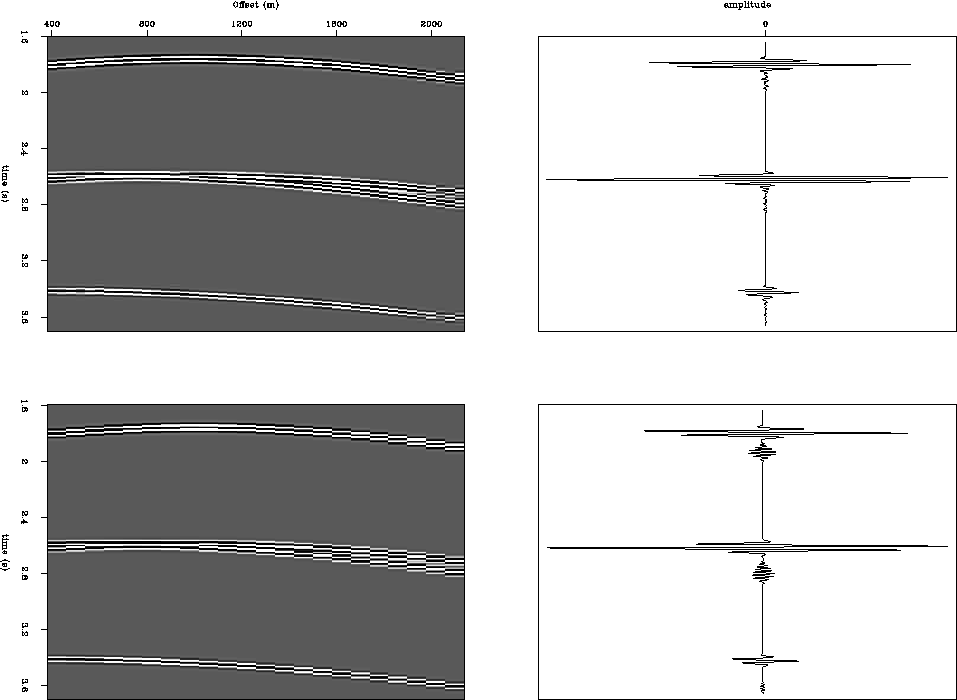
The 3-D estimation of a multiple trace is achieved by stacking a 3-D MCG. As discussed in the preceding section, the 3-D MCG can be safely stacked into a 2-D PSMCG along the in-line direction. In the cross-line direction, the PSMCG has to be more densely sampled to avoid the aliasing noise. Therefore, we propose to interpolate the PSMCG directly and then stack it into a multiple trace.
We can interpolate the aliased data in either the F-X Spitz (1991) or the T-X domain Claerbout (1992). I have chosen the time-space domain multi-scale PEF theory discussed in Section 8.4 of Claerbout (1992) to interpolate the PSMCG. The basic idea embedded in the theory is that large objects often resemble small objects. Supposing that we have an input data with alternate missing traces, we can estimate a PEF with the following shape:
 |
(1) |
| |
(2) |
Figure 7 shows two PSMCGs containing crossing events, before and after interpolating the alternative missing traces and the corresponding stacking results. The aliasing noise has been greatly reduced after trace interpolation.
|
mcg-interp
Figure 7 Top: a densely-sampled ( |  |